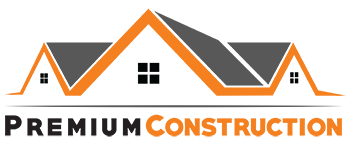Things to consider when building your first home
1. SOIL RATINGS
Know the type of soil you’re building on. Sandier soil will have to be compensated for, as will soil that is mostly clay-like. Knowing the soil type and building to structurally compensate for these factors can save you heartache and money down the track.
2. BUILDING COVENANTS
Be aware if there are any building covenants that apply to the area. These could be things like restrictions on paint colours (e.g. must be painted heritage colours) or materials (e.g. house must be rendered) or height (e.g. must be below three storeys).
3. ‘SMALL LOT’ CODES
If you have a smaller lot, be aware of any restrictions that may apply. Certain safety standards have to be met when it comes to small lots, particularly with fire safety. Save yourself added expense down the track and ensure you’re meeting the requirements.
4. UNEXPECTED DELAYS
Delays are most likely going to occur. To minimise this, ensure all the necessary materials have been ordered well before they are needed, and always confirm appointments with tradesmen the day before they’re due at the site. Try to keep some money allocated for emergency use – this can be used for those unexpected problems that sometimes pop up. It could be something as simple as an item breaking, or needing an extra that wasn’t originally factored into the equation.
5. CONSIDER RESALE VALUE
If you plan on later selling the property, ensure that what you spend on the house doesn’t exceed the estimated sale value – you want to make a profit! Talk to your builder about what upgrades can be added to increase the value of your home, and what features are popular in the current market. Upgrading your home during the building process, rather than later on, will save you a lot of money when you’re ready to sell.
Know your numbers
Before you start building your new home, run some numbers to determine whether you can afford to build the home you want. Most house plans offer a cost to build tool (usually for a nominal fee) to give you an accurate estimate of construction costs based on where you’re building. The numbers include the costs of construction, tax benefits, funds for the down payment and slush account, and other related calculations.
Once you’ve determined you can afford to build the house you want — purchase your house plan and head to the bank to arrange for financing. Keep in mind that home construction lending is a little different than regular mortgage financing. First you’ll need a home construction line of credit that will be used to pay subcontractors and suppliers who perform work and provide supplies. Once your house is constructed, you will need a residential mortgage to pay off the construction line.
Check the reputation of your builder
Many builders are out there, but not all are created equal. Do a little research to find out which builders have the best reputation. Whether you search for information online or get recommendations from your family and friends, find out whether a builder is respected for doing quality work as well as being punctual. Our architects and designers recommend that you use only builders who are members of the National Association of Home Builders (NAHB).
Build with resale in mind
No matter how much you love the house that you are building, it’s unlikely that it will be the last home you will ever own. Knowing that, you should be mindful of its potential resale value. Don’t add so many upgrades that you overprice your home for the neighborhood. And don’t choose anything too out of the ordinary. Ask yourself if the features you’re considering installing are likely going to appeal to others.
Contact us today to book a free quote.


